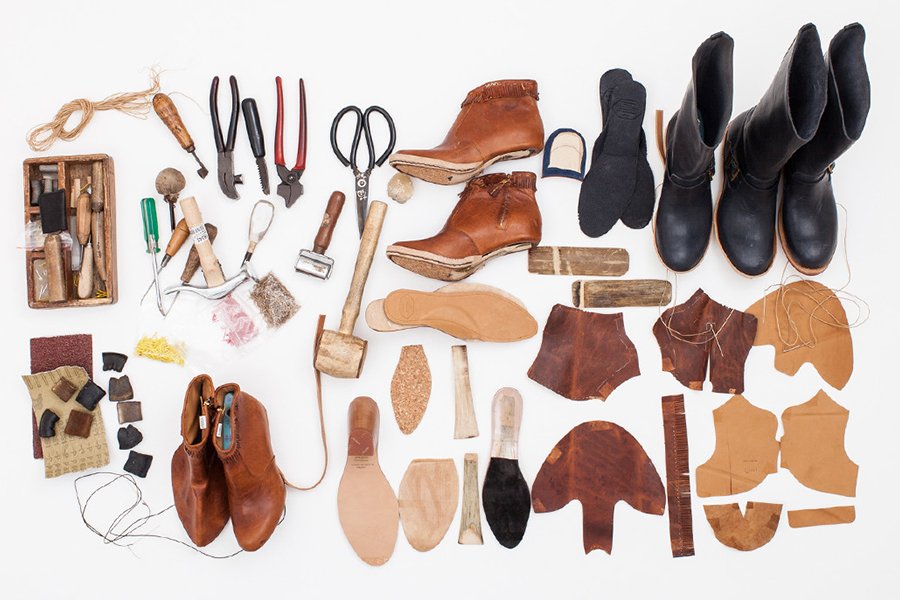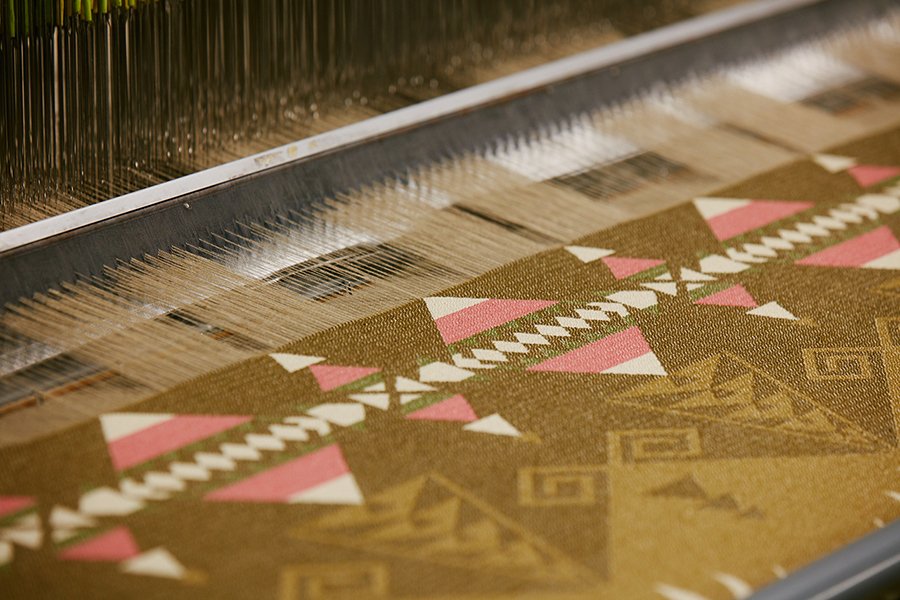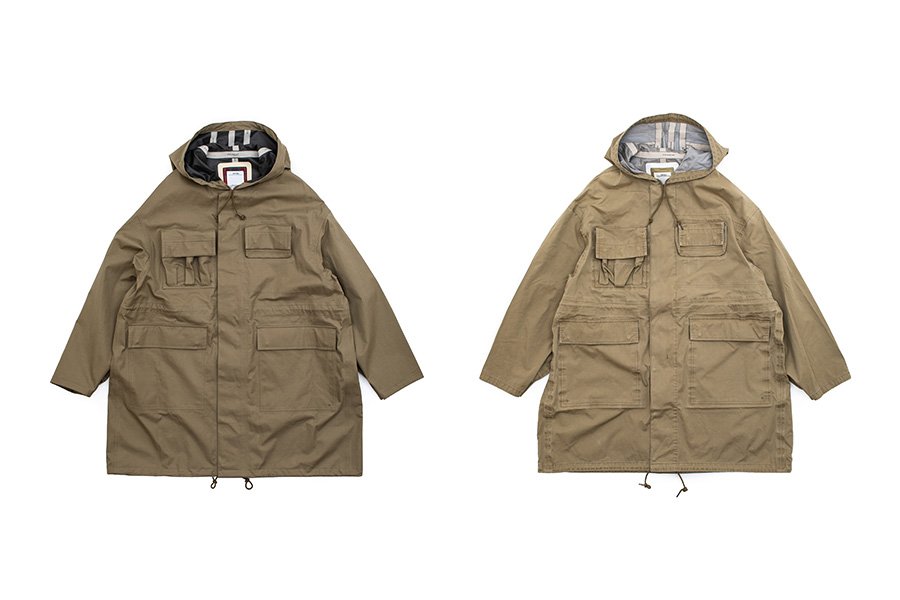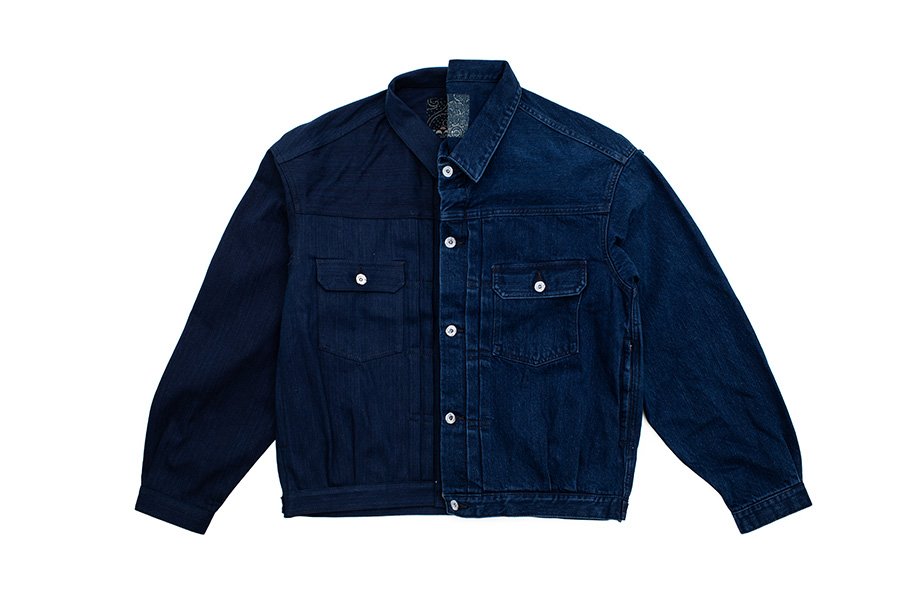Dissertation
Kiri-Geta
In Japan where it is customary to take off your shoes when you enter your home and also taking into consideration the climate, which is hot and humid, the geta just makes sense as a functional piece of footwear. Alongside its leather boots and sneakers, visvim has continued to offer new styles of geta as part of its collections since the 2012 Spring and Summer season.
| Category: | Products |
|---|
| Date: | 2023.03.14 |
|---|
| Tags: | #kirigeta #visvim |
|---|
"Geta" a traditional Japanese style of footwear is seldomly seen being worn around town these days. However, there are still groups of enthusiasts around, and when you visit a quaint sushi restaurant or small eatery there are times when one can hear the distinct, "karan, koron" (click, clack) sound coming from the kitchen where the chef will be wearing a pair of geta. The reason the culture of wearing geta remains in the world of Japanese cuisine is possibly due to its ability to be worn barefoot, its cleanliness, as well as a high regard for its functionality including the ability to hold the strap of the geta firmly with the big toe and the index toe making it suitable for a posture common to cooking that is slightly forward leaning.
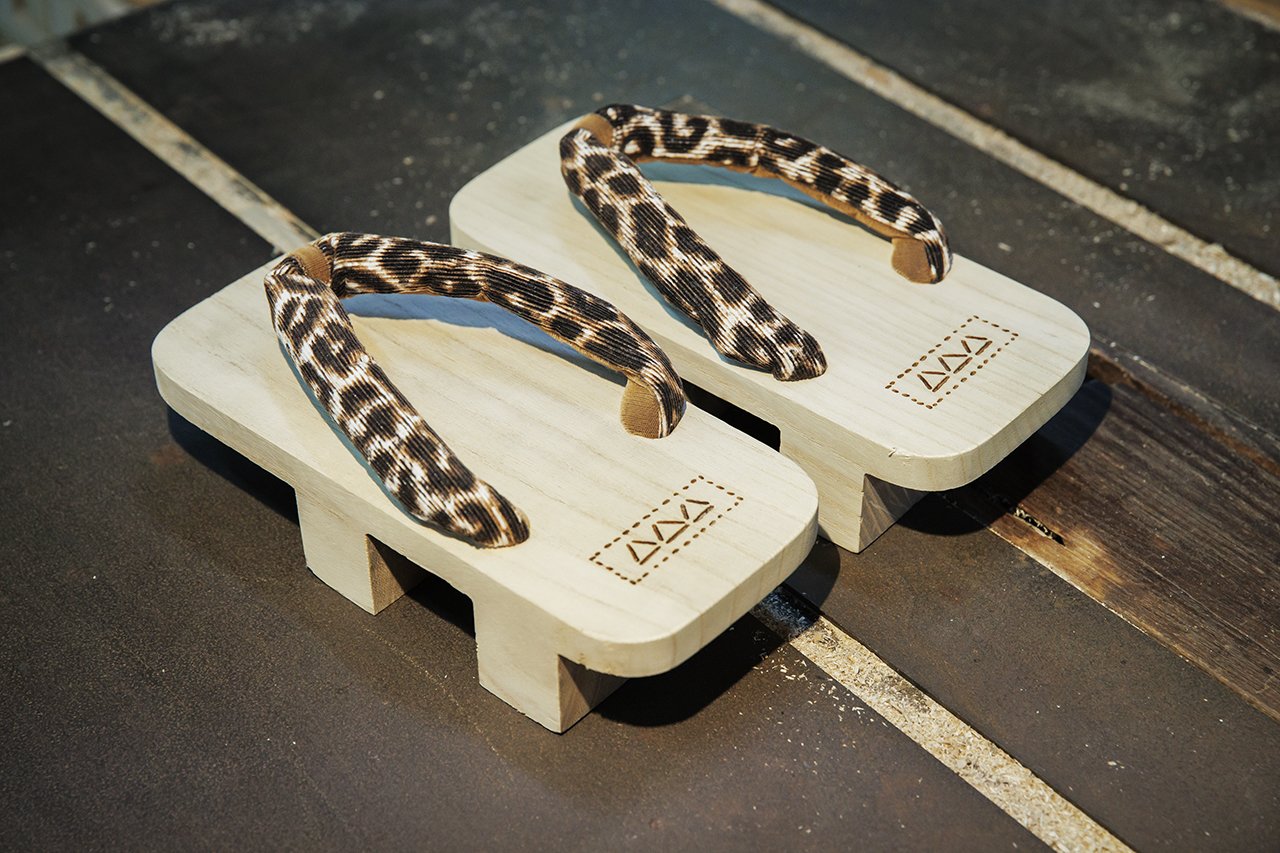
It was in the late Edo period that shoes came to be worn in Japan. Leather shoes were adopted first as part of the military uniform of the new Meiji government, and gradually spread to the general public. Prior to that people wore geta or sandals of which straw versions were the most common, and there were even those who lived barefoot. Up until the 1950's it was said that every household had at least one pair of traditional Japanese footwear, however today it is considered to be a more special piece worn mostly by enthusiasts and also for occasions when people wear traditional Japanese clothing (wafuku). Simply put, fewer people hold such things in their possession today.
In Japan where it is customary to take off your shoes when you enter your home and also taking into consideration the climate, which is hot and humid, the geta just makes sense as a functional piece of footwear. Alongside its leather boots and sneakers, visvim has continued to offer new styles of geta as part of its collections since the 2012 Spring and Summer season.
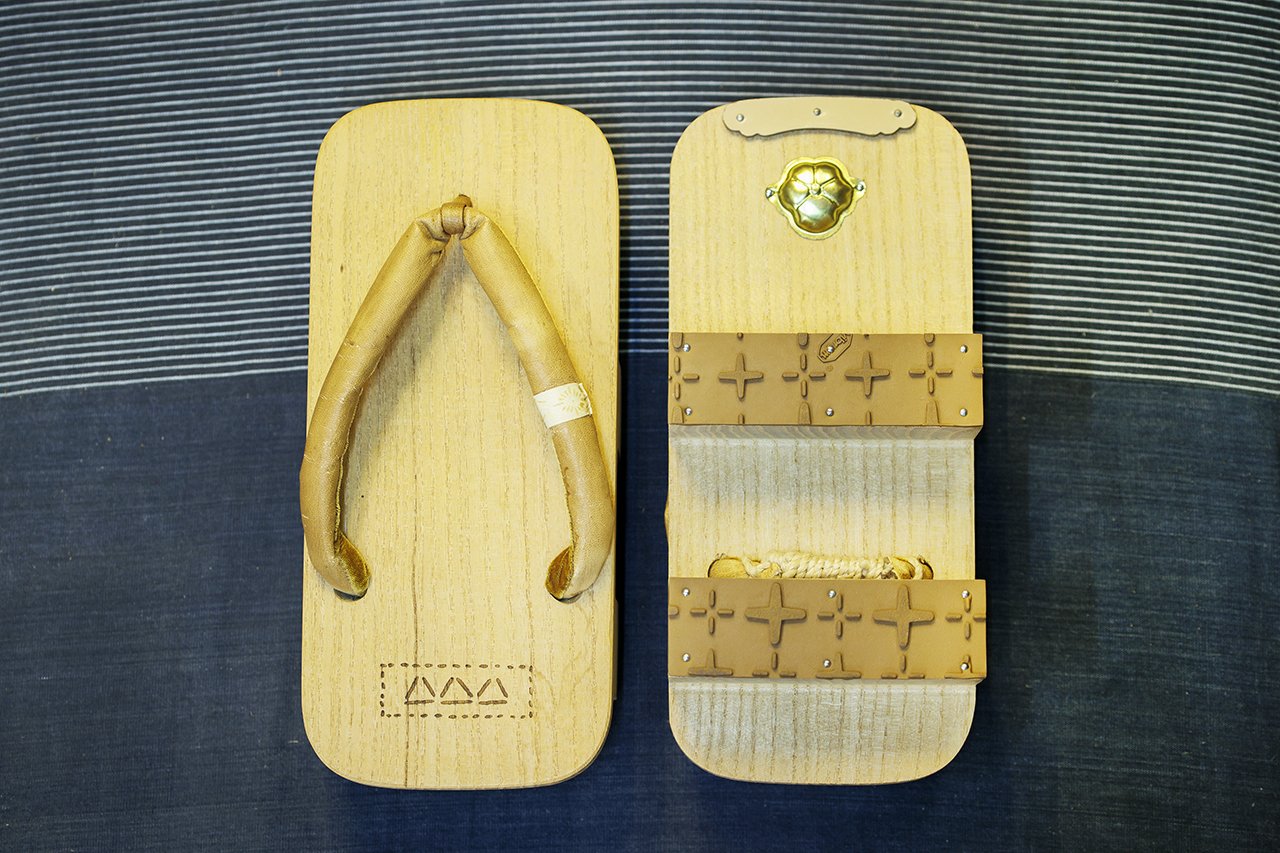
The hard and glossy nature of domestic Kiri (Paulownia Wood)
Kiri (Paulownia Wood) is the lightest wood of the domestic trees native to Japan and also has a beautiful light-colored bark. Due to its special fiber structure, which contains air bubbles the thermal conductivity is low resulting in excellent insulation and humidity control. Additionally, it has antiseptic and insect repelling properties due to a high concentration of tannins and other ingredients. Kiri became a big part of daily life thanks to its natural characteristics, which resulted in its use for certain daily necessities such as a certain box widely used for storing valuable documents, as well as other items including a chest of drawers and of course geta. It was also used in traditional performance arts such as Gagaku and incorporated for use in gigaku masks and kotos.
In the Aizu area of Fukushima prefecture and the mountainous regions of Niigata Prefecture where the climate is colder the Kiri grows slower resulting in smaller annual tree rings. The dramatic temperature shifts from the harsh winters to the humid summers yield a Kiri that grows hard and glossy in nature. The geta produced for visvim utilizes a high-quality Niigata Kiri as the material of choice and is made by, "Kobayashi Hakimono Ten" (Kobayashi Footwear Store), a kimono footwear specialty store founded in the 8th year of the Taisho era, which is 1919. We paid them a visit where they showed us their manufacturing process.
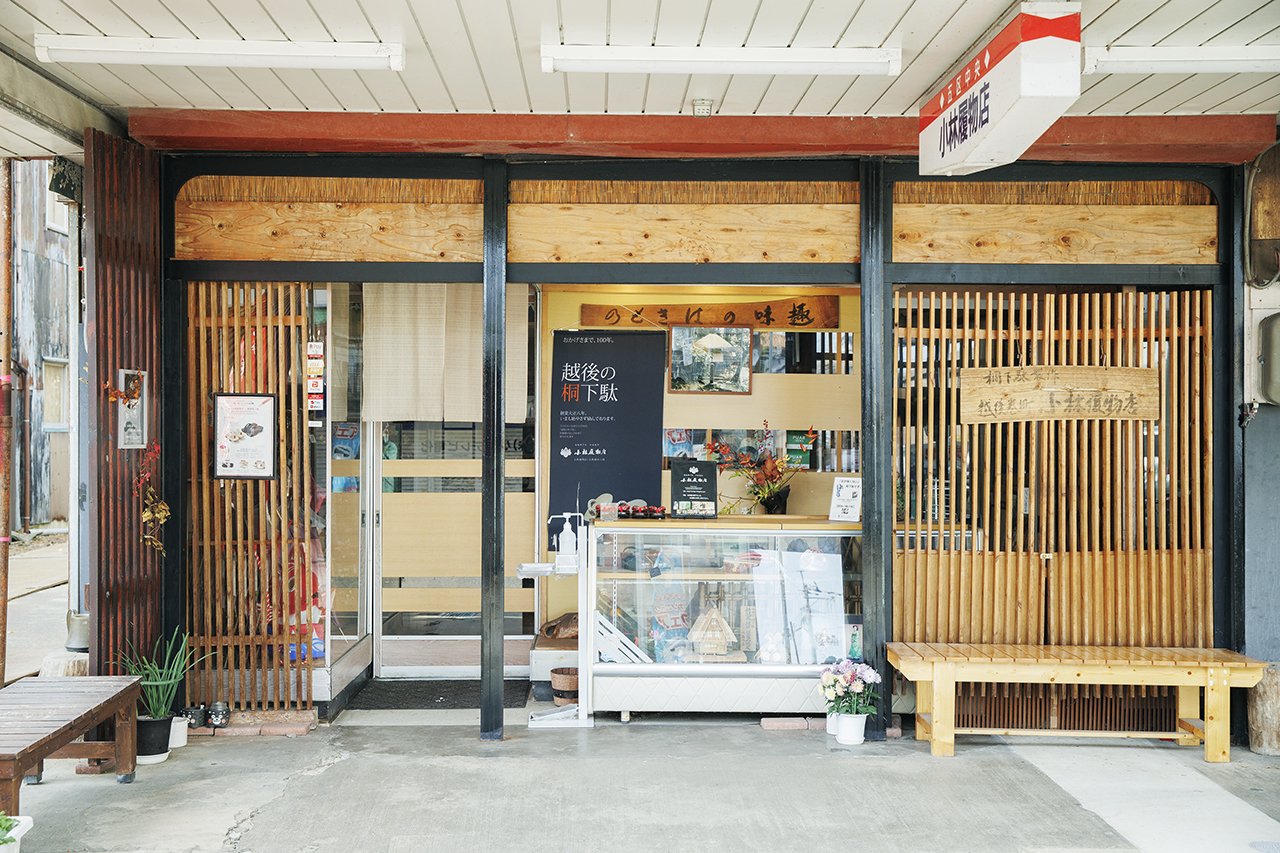
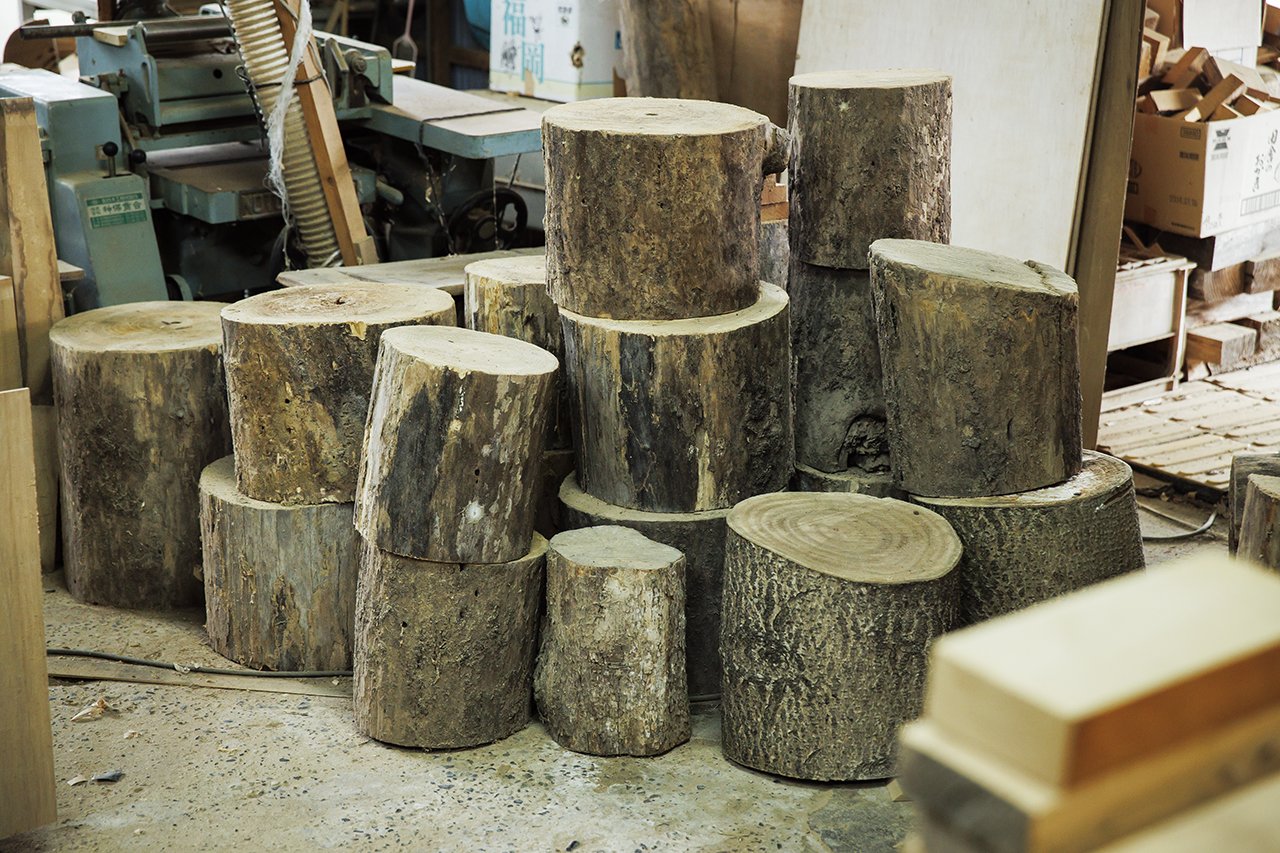
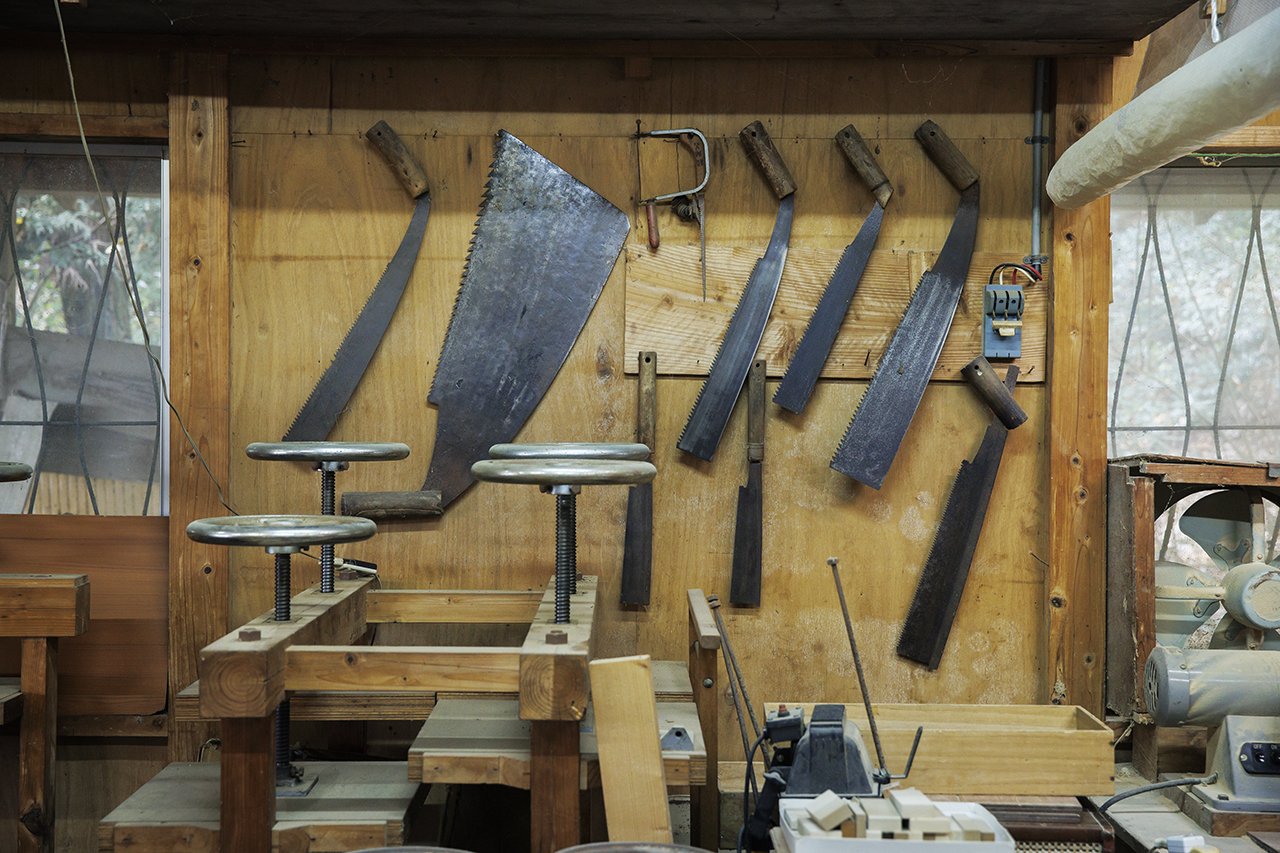
The worth of a pair of Kiri-Geta is determined by the beauty of the straight grain
Approximately 10 minutes away by car from the storefront, which is located in the central shopping area of the Nishikan Ward of Niigata City is a workshop where the sawmill and processing plant are adjacent to each other. At the entrance of the sawmill were piles of Kiri wood that had been cut into 40cm logs. An important process known as "shibu nuki" exposes the material to rain and wind outdoors, which then dries naturally. This is repeated numerous times during the process and prevents discoloration and cracking of the wood after processing. Depending on the shape, Kiri-Geta processing involves dozens of steps and can take more than 1 year from the cutting of the raw wood, to the shape of the geta, drying, and finally finishing.
The worth of a pair of Kiri-Geta is determined by the beauty of the straight grain. There are two ways of cutting the smaller pieces from a log to make the geta, one being the straight grain (masame) which cuts in a perpendicular direction to the annual tree rings and the other being the cross grain (itame) that cuts parallel from the end of a log. The most efficient way to saw wood is with the cross grain (itame), however in the making of geta it is considered to be more beautiful when a straight wood grain appears and the finer and straighter the grain is the rarer it is. Not only is it beautiful to look at, but there is an additional feature where the shrinkage is uniform along the surface of the cut which makes it unlikely for any warping to occur.
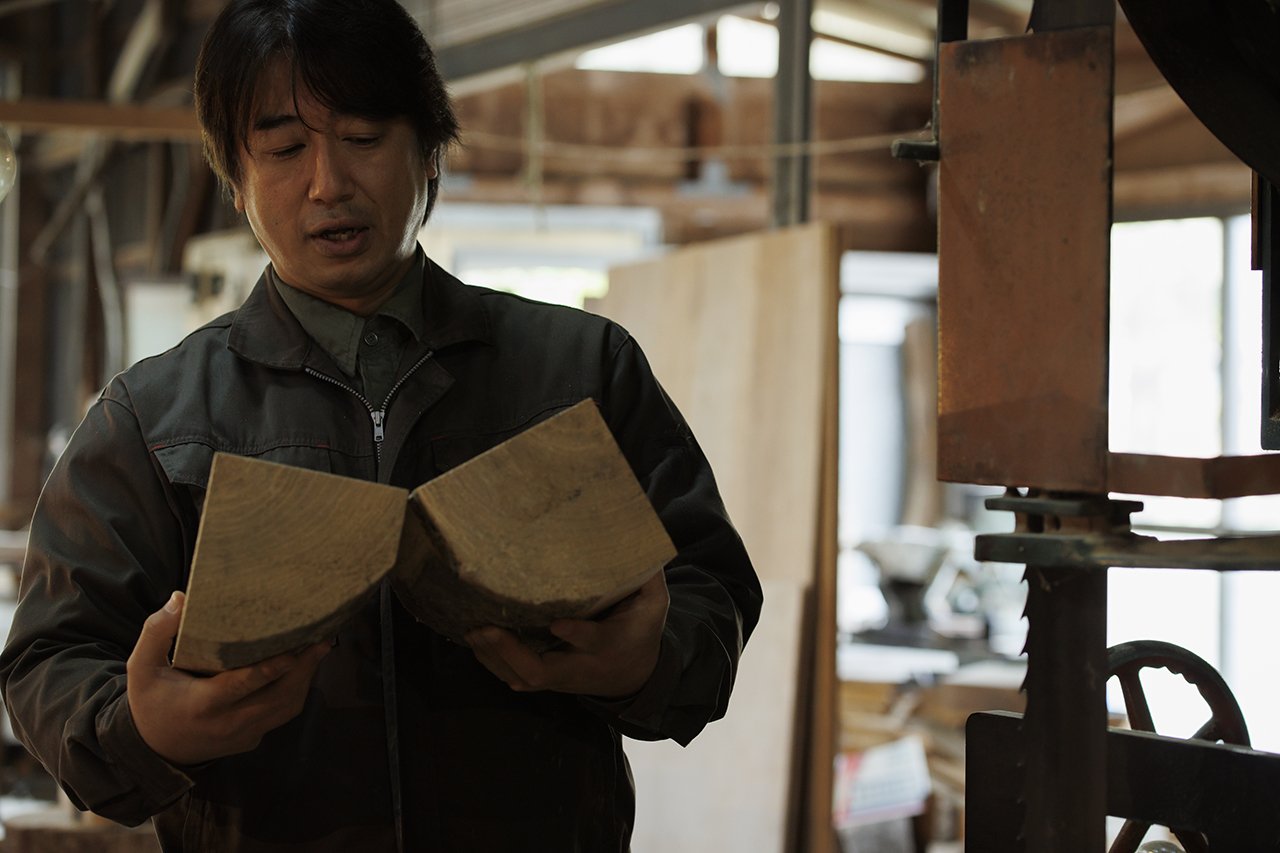
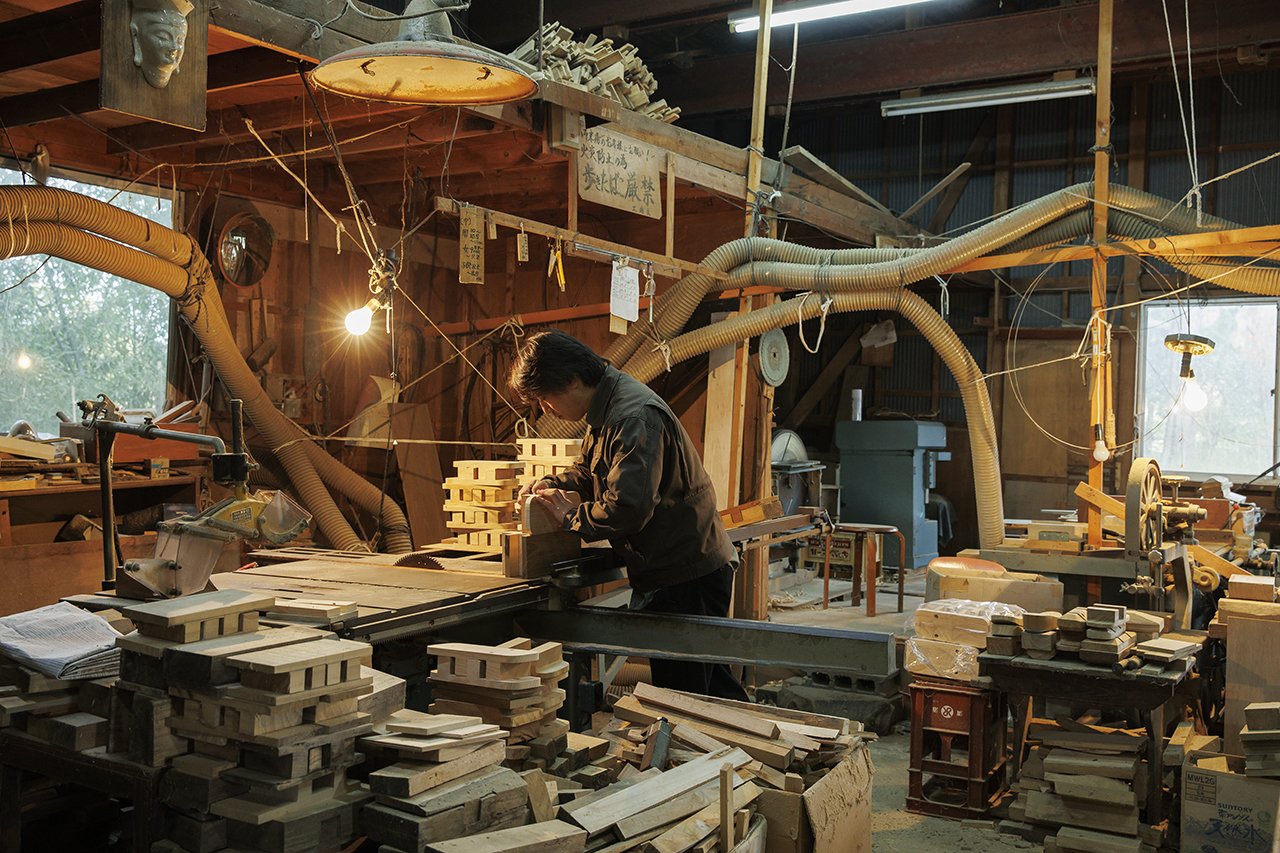
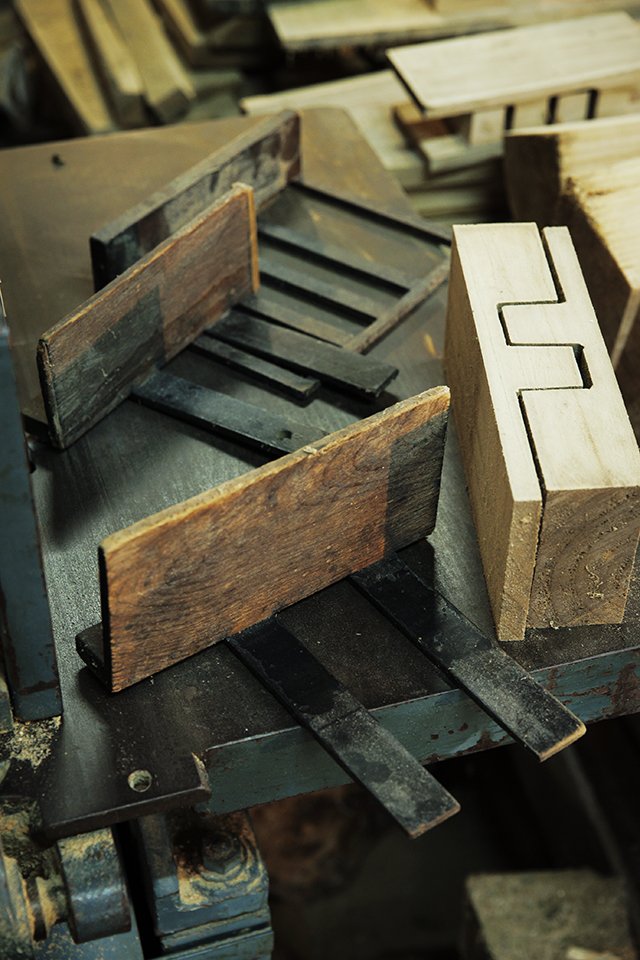
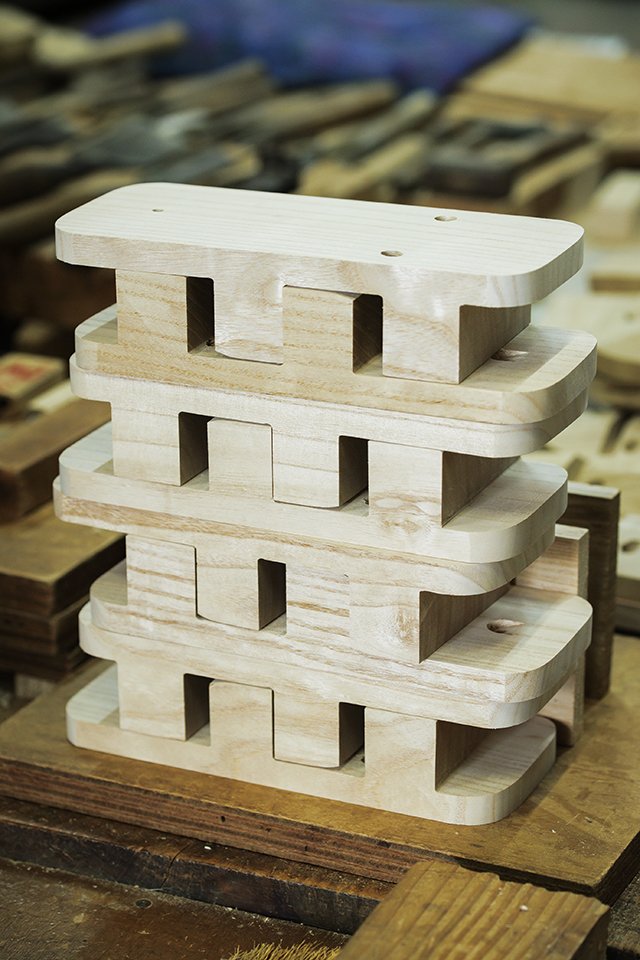
The process of deciding where to insert the blade into a log, known as "sumikake" requires one to read and sense the interior condition of a tree with limited information relying strictly on the outer appearance and weight of each log. "No two trees are alike when it comes to the characteristics of the annual tree rings, knots in the wood or worm-eaten spots so we must rely on previous experience to read the grain of a log and decide where and how to cut," says the fourth-generation proprietor and craftsman Masaaki Kobayashi. Whether one can cut the log to obtain a more beautiful straight grain depends on the seasoned skills of the craftsman. Following the sumikake step the small pieces of lumber that have been cut out are marked in order to match the wood grain. It is said that when the annual tree rings seamlessly match with a left and right pair cut from the same log it is more valuable.
Matching the width of left and right known as "sobatori", the cutting of the teeth called "getahiki", cleaning the sides of the teeth by soaking in hot water, "hasuki", and finally onto being dried. Once the general form of the geta takes shape each pair is finished by hand using specialized tools, such as a chisel or a plane in accordance with the desired final shape. Depending on how they are finished, the smoothness of the surface and overall balance can vary greatly, which affects the comfort level of the geta.
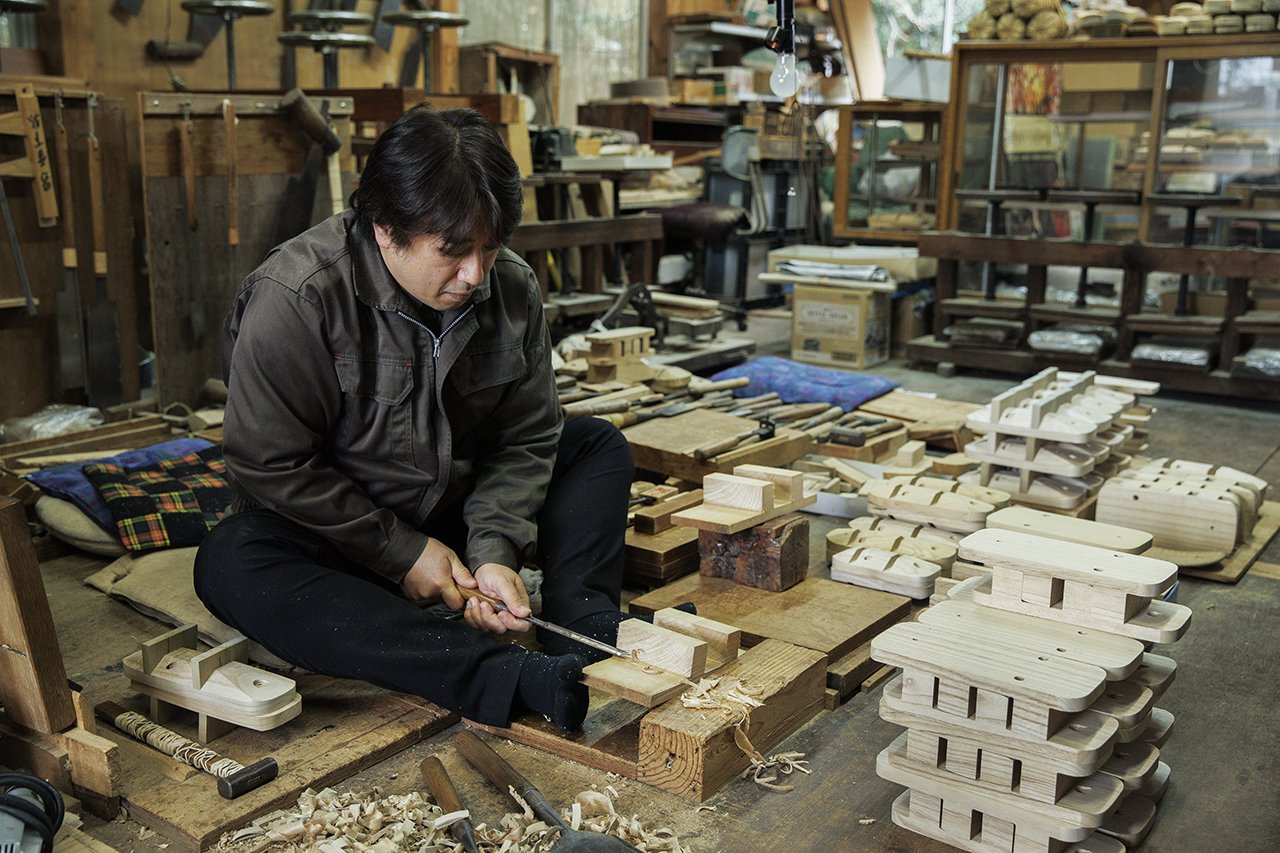
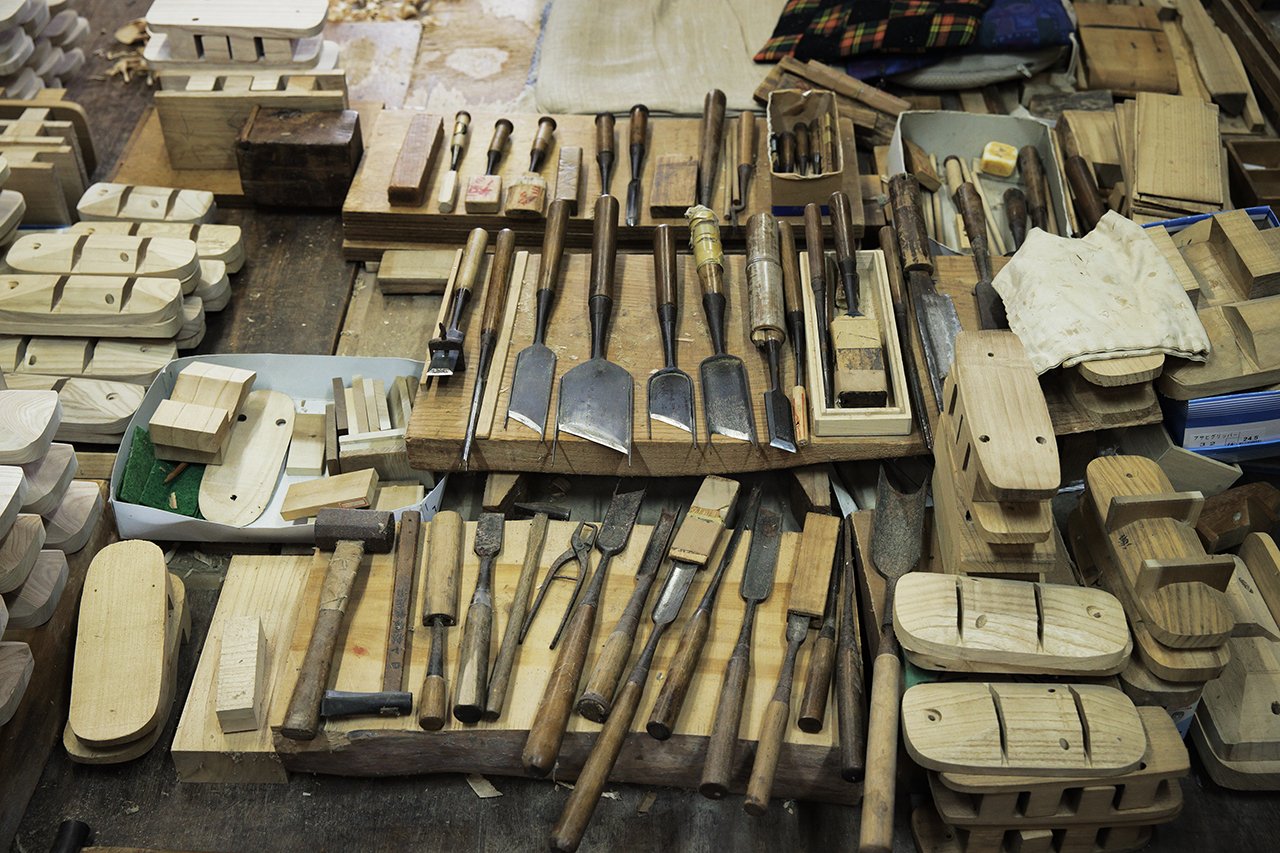
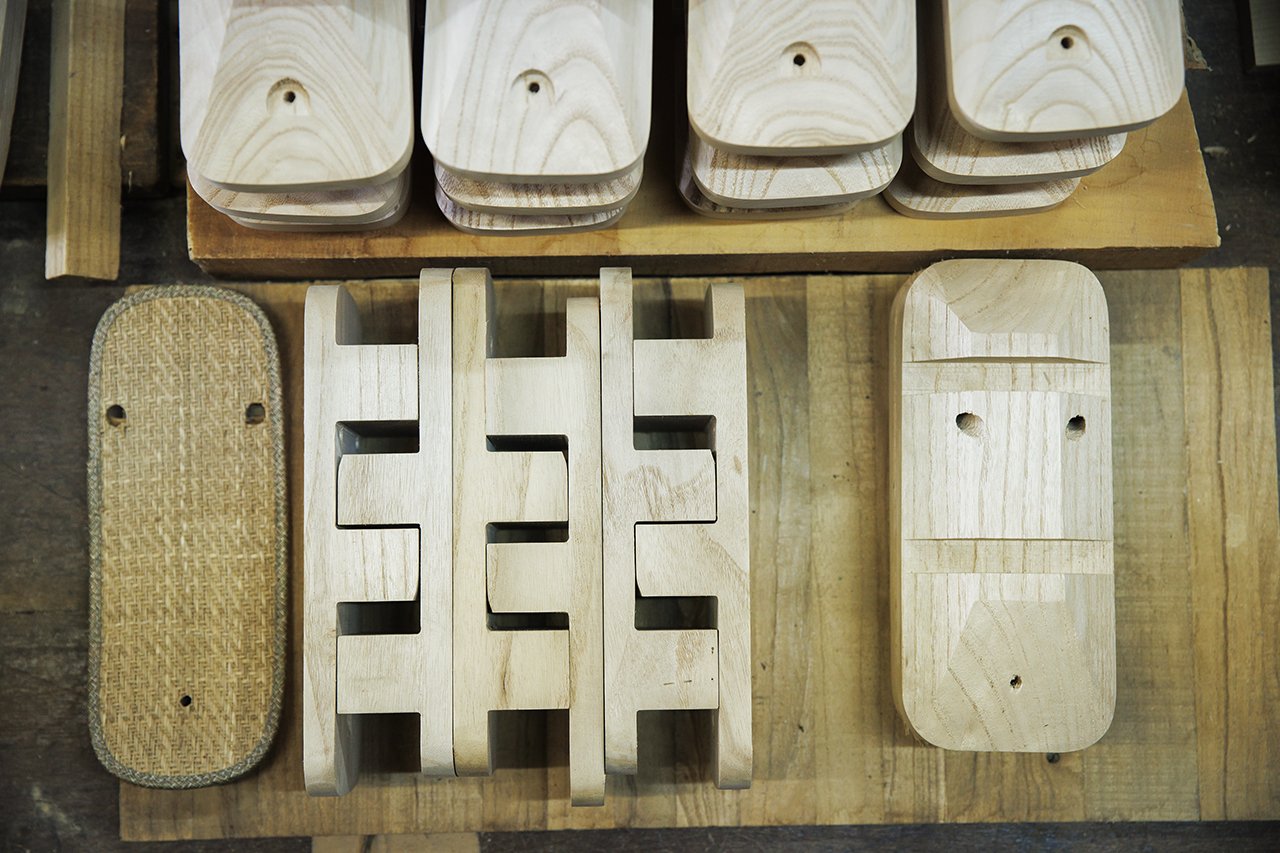
Genuine lacquer finish
The SS23 version of the geta from the WMV collection will offer two colorways finished in genuine lacquer. Mr. Atsushi Imura, a traditional craftsman from Niigata Lacquerware makes a geta that starts with 4 coats of lacquer, which is then sanded and finished off with 7 more coats. To the untrained eye, the precision is of a level that even with a small number of coats, the finished product looks beautiful, however when comparing the different finishes, it becomes apparent that the depth of color is different when applying numerous coats. The dedication of the craftsman can be sensed as they strive to complete a glossier and more beautiful version of the geta.
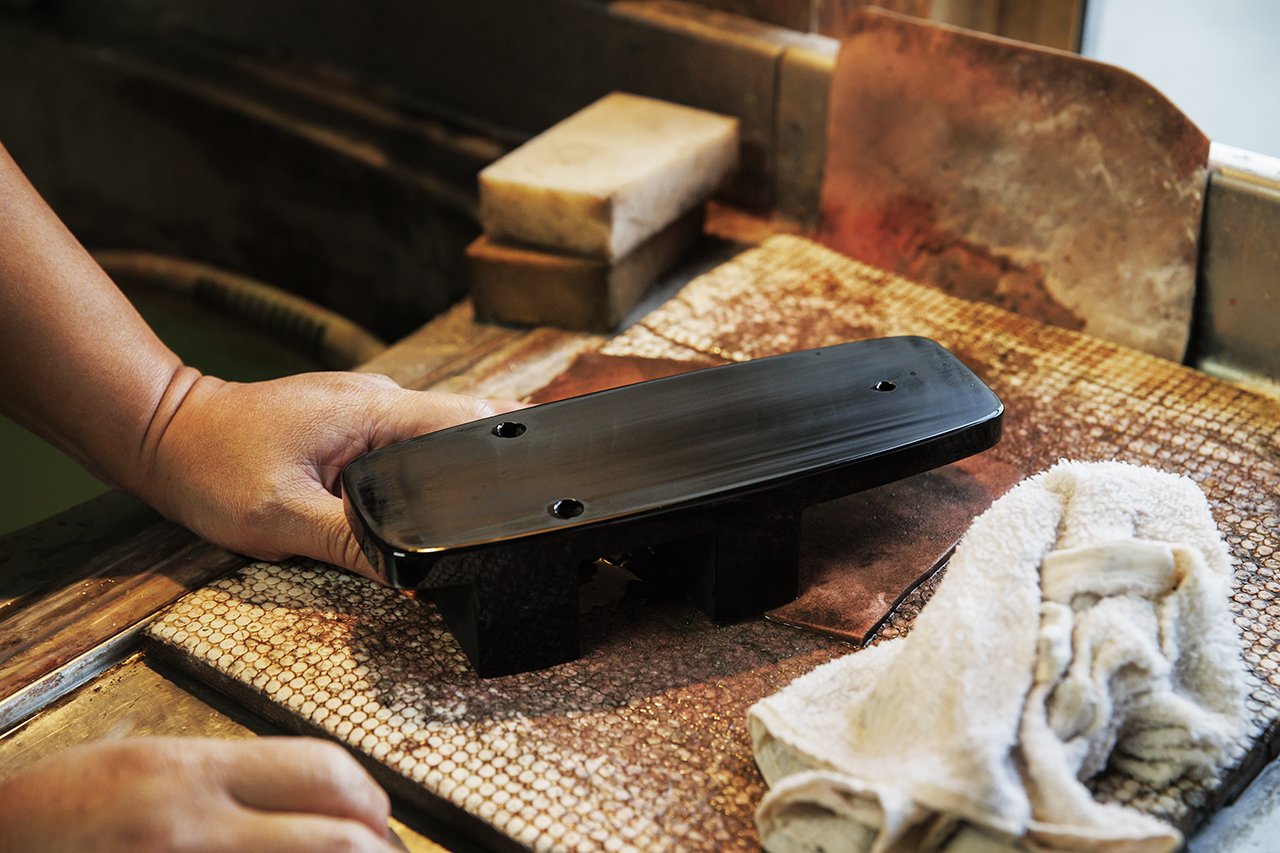
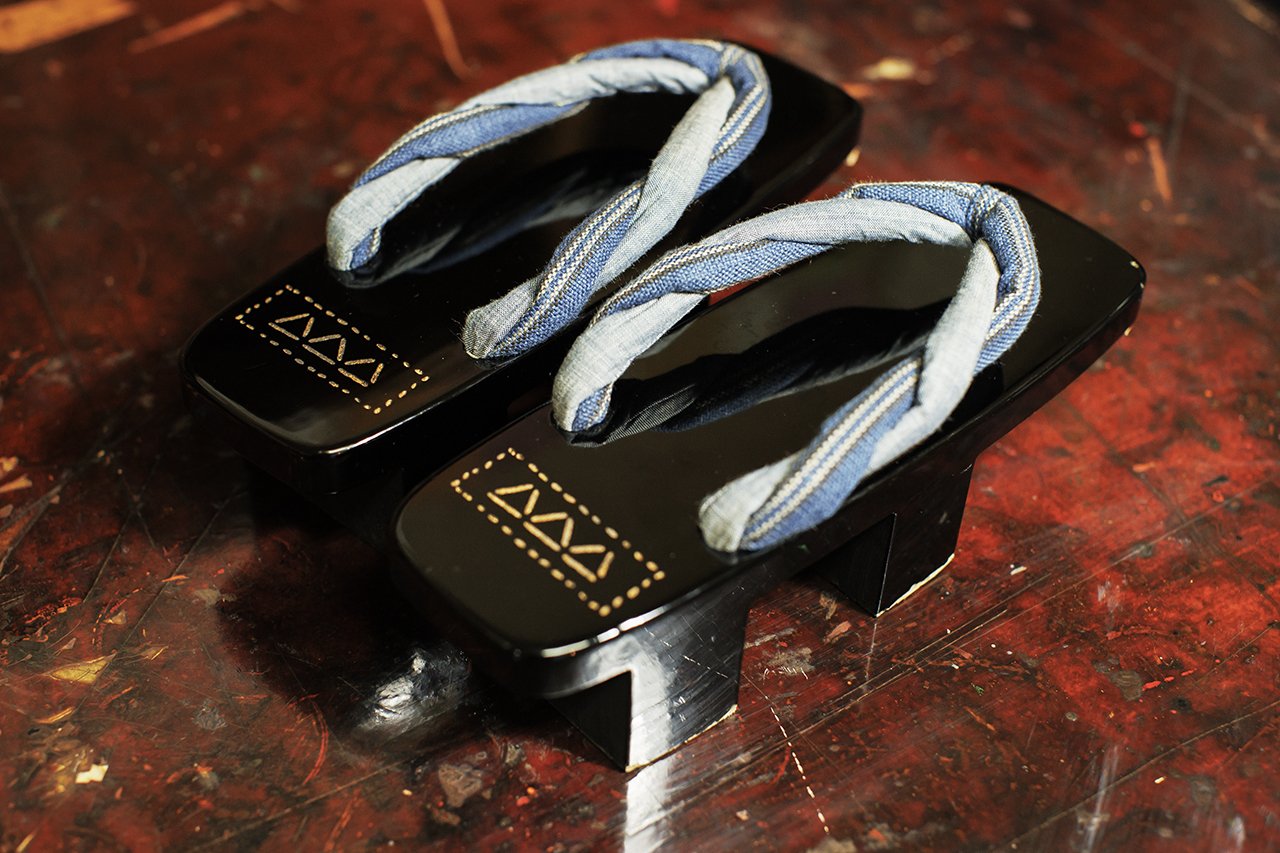
It is particularly difficult to finish the white lacquer coating beautifully. White lacquer is created by combining a white pigment with lacquer and once the white lacquer is applied, after a while the lacquer's natural dark brown color begins to appear resulting in a dark beige tone, further hardening allows the white of the pigment to slowly come out. This is all due to the unique property of lacquer itself, which hardens once it is exposed to moisture in the air. In order to achieve the desired color while maintaining a consistency in the quality it becomes crucial to make the right adjustments in temperature, humidity, and the mixing condition of the lacquer and pigment. This is only possible with the knowledge and experience of an expert craftsman.
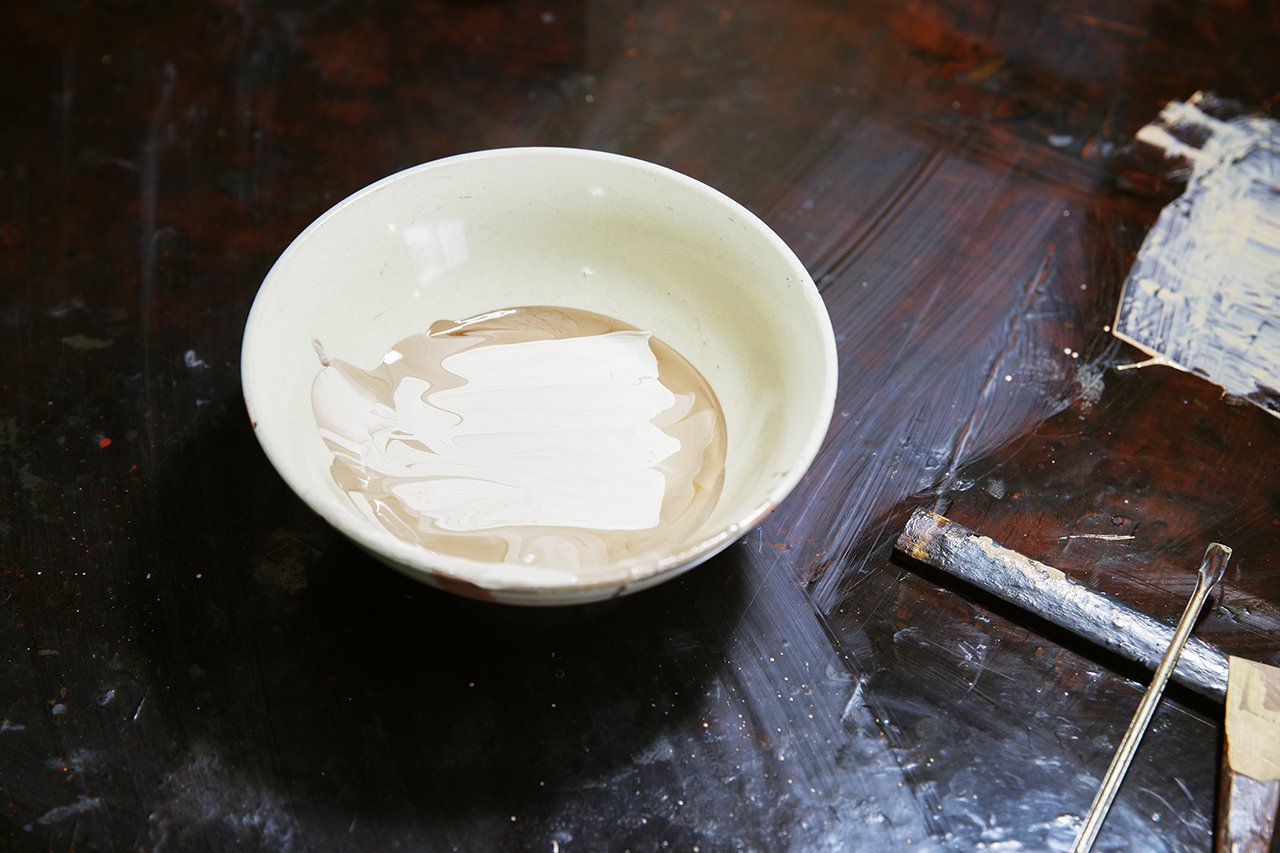
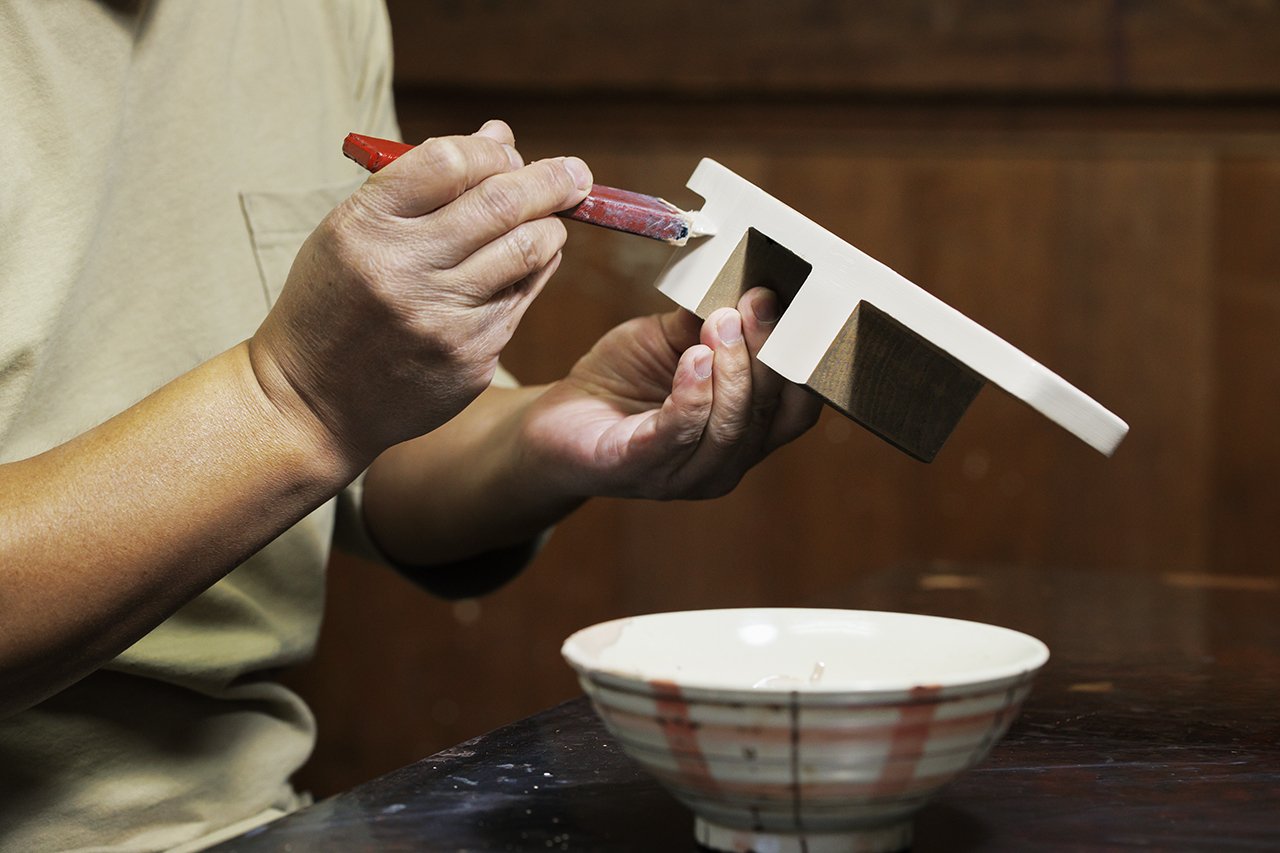
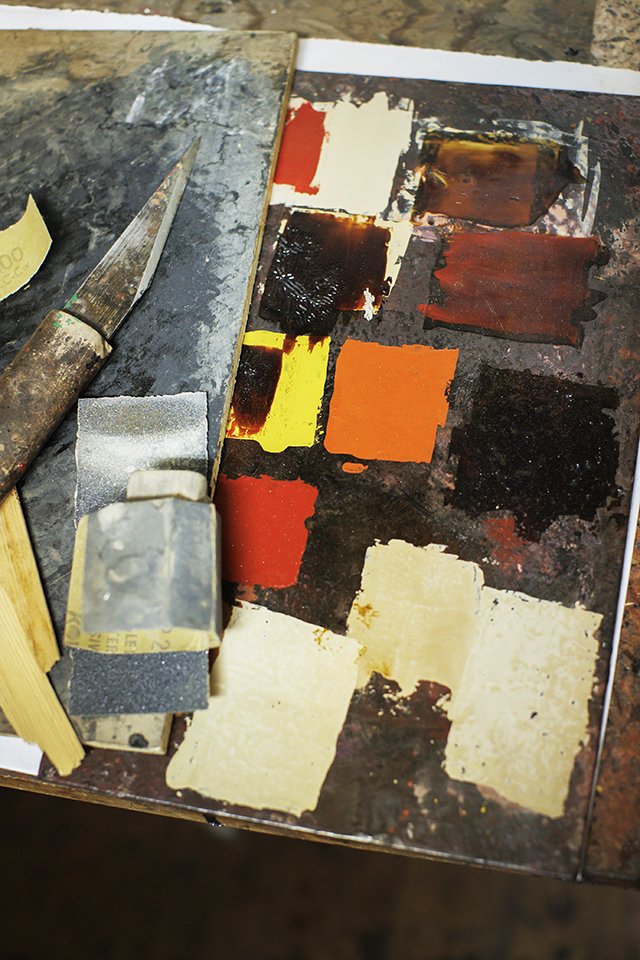
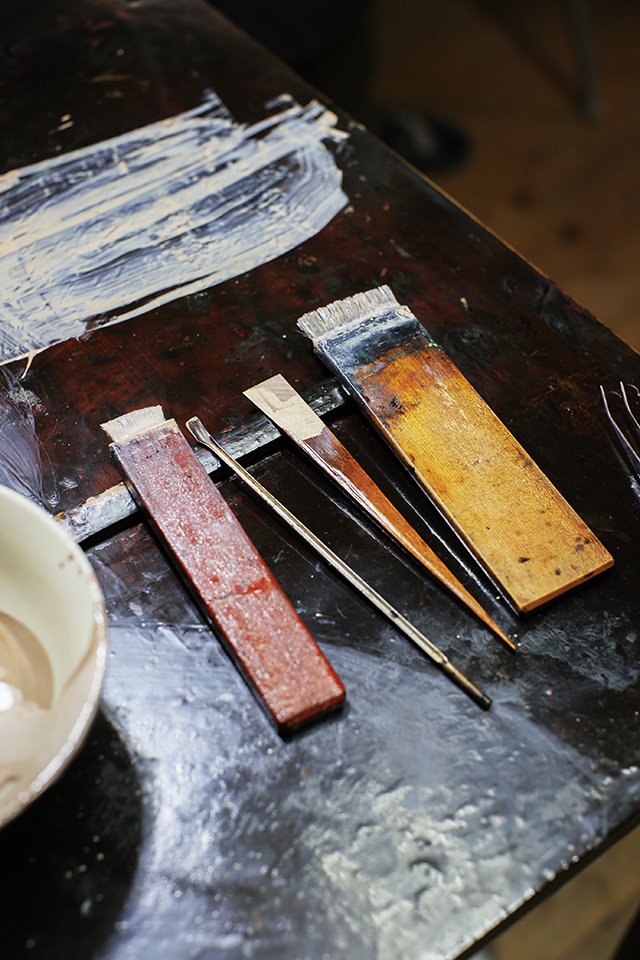
It is true that the number of people who own a pair of geta is decreasing, however every home has a "getabako" (shoe box) and as the name itself implies the culture of geta is a familiar one to Japanese people. Rather than simply preserving geta as a beautiful piece of traditional craft, we hope to continue providing opportunities to revisit the functionality and unique form of this craft and reinterpret its use to be incorporated into the modern lifestyle.
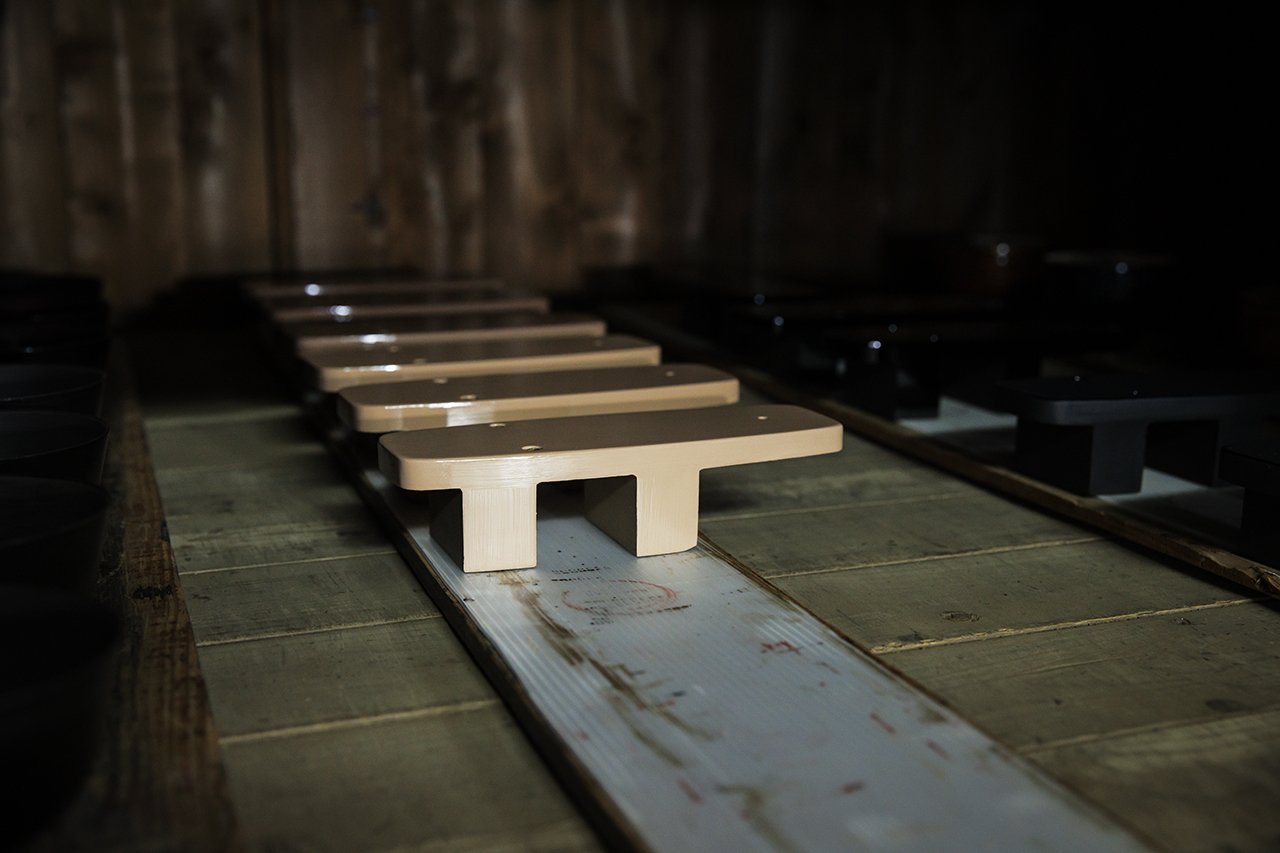
Photo, Movie: Takeshi Abe




